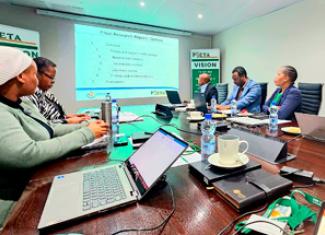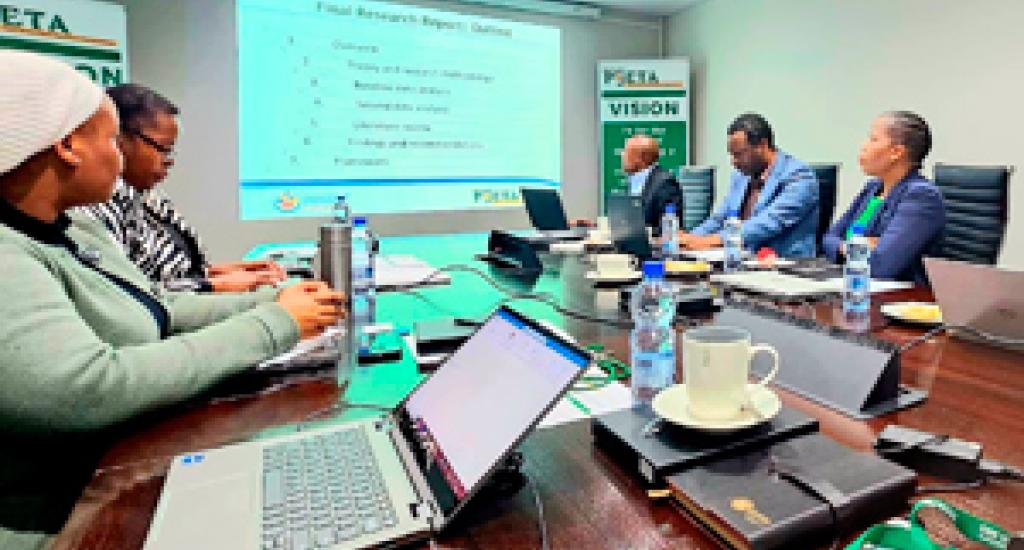Study highlights urgent need for public sector skills reform in the Free State

The Public Service in the Free State is a significant component of the provincial economy, encompassing government services, healthcare, education, and municipal operations. However, this sector faces a critical shortage of skilled professionals in both traditional and emerging occupations. Persistent gaps in healthcare, engineering, and information and communication technology (ICT) threaten service delivery, while the growing demand for digital transformation expertise remains largely unmet. The absence of structured workforce development programmes limits the sector’s ability to train and retain qualified personnel. Additionally, government employment struggles to compete with private-sector opportunities, further exacerbating staffing challenges.
A recent study aimed at developing a provincial sector skills plan for the Free State reveals significant findings regarding skills demand and supply in the province. These findings relate to key skills change drivers, skills gaps, partnerships, and strategic recommendations. This opinion piece draws on insights from this study, conducted by the University of Free State as a strategic initiative by the Public Service Sector Education and Training Authority (PSETA) in partnership with the Free State provincial government. PSETA, as one of the 21 sector education and training authorities, plays a critical role in facilitating targeted skills planning and quality learning interventions across government institutions. This study represents a foundational step in aligning skills development efforts with the specific mandates of the legislative sector.
Key findings
The Public Service in the Free State faces significant challenges in meeting occupational demands, mainly due to skill shortages, misalignment between education and job requirements, and evolving workforce needs. Critical skills in engineering, ICT, and cybersecurity remain scarce, forcing government agencies to outsource expertise. Additionally, universities produce graduates who lack the practical skills required for government roles, leading to inefficiencies in service delivery.
Emerging trends such as digital transformation require new competencies in data analytics and online service management. Without strategic interventions, these gaps will continue to undermine public sector efficiency and innovation.
Education and training
The education and training system in the Free State faces significant challenges in aligning with labour market demands, leading to high graduate unemployment, skills shortages, and weak vocational training outcomes. The empirical findings indicate that curricula in higher education institutions (HEIs) are regarded as outdated and do not adequately prepare students for emerging industry needs in renewable energy, ICT, advanced manufacturing, and agribusiness. TVET colleges struggle with low enrolment, limited industry partnerships, and outdated training models, making it difficult for graduates to secure employment. Furthermore, concerns are expressed about graduate readiness, insufficient practical training, and skill mismatches.
Addressing these gaps requires a strategic overhaul of curricula, increased employer engagement, stronger vocational training incentives, and funding for research and innovation that directly supports the province's economic growth and workforce development.
Strategic alignment
While numerous partnerships exist between government entities, educational institutions, and private sector stakeholders in the province, the findings reveal that many lack strategic alignment with the province’s broader economic and social development goals. The disjointed nature of these agreements often results in limited impact, as there is no clear roadmap linking partnership objectives to long-term developmental priorities.
Additionally, while agreements are frequently signed, their implementation remains slow and lacks structured coordination. Without proper strategic alignment and coordination, many of these partnerships fail to deliver tangible outcomes that contribute to sustainable economic growth and social transformation.
The empirical findings indicate that engagement between the provincial government entities and private sector industries remains superficial, with minimal effort to align training programmes with evolving labour market demands. A notable disconnect between workforce development strategies and industry needs results in persistent skills mismatches that hinder economic progress. Furthermore, collaboration between government and industry on skills forecasting and workforce planning is limited, preventing proactive measures to address future labour market shortages. Without stronger industry linkages and targeted initiatives to bridge these gaps, the skills development ecosystem will continue to fall short of preparing individuals for the workforce.
Fragmented collaboration
While public-private partnerships (PPPs) have the potential to address skills shortages and improve workforce readiness, the empirical findings suggest that existing collaborations in the Free State remain fragmented and poorly coordinated. Successful skills initiatives exist but operate in isolation, lacking a centralised database to track progress and impact. The disconnect between training initiatives and job placement opportunities weakens the overall effectiveness of PPPs in addressing industry-specific skills needs.
Strategic recommendations
Through strengthening monitoring and evaluation (M&E) of skills planning and development, enhancing feedback mechanisms, and establishing a comprehensive workforce development framework, the following strategic recommendations are proposed:
Strengthen monitoring and evaluation of skills planning and development: M&E of skills development faces significant challenges relating to structural deficiencies and capacity constraints in the M&E process. The following recommendations are proposed to prioritise M&E from a skills planning and development perspective.
- Develop a standardised M&E framework for skills development aligned with national and provincial strategies.
- Improve training impact assessments through structured data collection.
- Align M&E reports with workforce planning to improve capacity-building efforts.
- Strengthen policy enforcement mechanisms to ensure compliance with M&E requirements.
- Improve interdepartmental collaboration through regular information-sharing sessions.
- Establish a centralised M&E database accessible to all relevant departments.
Enhance partnerships: The empirical evidence shows that educational partnerships must be enhanced, industry partnerships strengthened, strategic partnerships established, and PPPs increased. The following recommendations are proposed to prioritise such partnerships.
- The provincial skills development forums should include representatives from HEIs and TVETs.
- Advisory Boards of HEIs and TVETs should include representatives from the Free State Provincial Government and its entities.
- Joint identification and design of programmes by the provincial government and HEIs that could fill skills gaps and meet the skills supply required by the Public Service in the province.
- Form partnerships with industry to identify interventions to address critical skills shortages.
- Establish a forum comprising industry stakeholders, provincial government representatives, HEIs that will conduct skills forecasting and workforce planning for the province.
- Form strategic PPPs that can support the skills supply of a Free State province Public Service that is responsive to the social and economic goals of the province.
- Form PPPs to identify interventions towards addressing critical skills shortages.
- Develop PPPs to identify interventions for addressing critical skills shortages.
Establish a workforce development framework
Workforce interventions must focus on strategic upskilling, targeted recruitment, enhanced training initiatives, location-based incentives, and industry and educational partnerships to ensure long-term sustainability. Without these measures, the Public Service in the province may face severe operational inefficiencies in the future. Increased investment in employee training and digital skills development is essential.
The following recommendations are proposed to prioritise the development of such a framework.
- Undertake a skills audit.
- Establish a competency-based training evaluation system.
- Develop a comprehensive workforce development framework.
*This article is based on research conducted by the University of the Free State on the Provincial Sector Skills Plan for
the Public Service Sector Education and Training Authority (PSETA). The authors write in their personal capacity, and
the views expressed in the article are theirs, not that of PSETA or the university.



